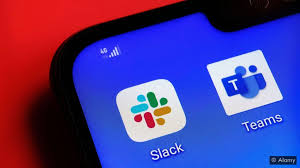How young workers are changing the rules of ‘business speak’
If you’ve ever tried to explain a meme to your grandparent – or if you’re the puzzled grandparent – you know how big the cultural divide among generations can be. And while all-caps ‘yelling’, misunderstood emojis and other crossed wires are harmless in a family group text, business communication is much more fraught. Send your boss the goat emoji, and instead of realising it’s a compliment (she’s the greatest of all time!) she might think you’re calling her, well, a goat.
Workplace harmony, culture and productivity all depend on successful communication. And while language gaps between senior leadership and newer hires aren’t unusual, they’re usually bridged by a shared lexicon of ‘business speak‘. But now, the first generation of true digital natives is entering the workforce, and a pandemic has forced us into virtual offices. Workplace communication is undergoing a major shift, with some huge potential pitfalls.
“With the ways we communicate now, there are so many more chances for miscommunication,” says Giselle Kovary, generational researcher and president of Toronto-based consulting firm n-gen People Performance, Inc. “There’s lots of noise in a digital environment, and unless we’re chatting live, things can be misinterpreted. To younger workers, the formal business communication of older generations can come off as very cold and a little harsh, while the criticism is that younger people are too casual.”

Gen Z, born in the year 2000 and later, is the largest generation in human history. Over the next 10 years, 1.3 billion of its members will enter the global workforce. Traditionally, the onus has been on younger workers to assimilate into office culture. But with the culture itself changing as the office moves online, the eldest and youngest employees of organisations may find themselves having to meet in the middle.
Australia-based social researcher Mark McCrindle, co-author of Work Wellbeing: Leading Thriving Teams in Rapidly Changing Times, says every generation “has their own youth slang and pop-culture code” that they use in social situations. But although older generations, and even millennials, are likely to ‘code switch’, sticking to a more codified type of professional communication, Gen Z is keeping things much more casual. McCrindle says, “We’re starting to really pull down those barriers between our work and personal or social life. We’re working from home, or in a mobile work environment, and that’s naturally creating a more relaxed workplace.”
The digital workplace is where Gen Z is already comfortable, explains Jonah Stillman, the 21-year-old co-author of Gen Z @ Work: How the Next Generation is Transforming the Workplace. “Since we were born, nearly every physical element has a digital counterpart. So, whether I put something in my cart at the supermarket, or click ‘add to cart’ is one and the same. This is a generation that defines being together as either FaceTiming or being in the same room.”
This is a generation that defines being together as either FaceTiming or being in the same room – Jonah Stillman
Stillman’s consulting firm, GenGuru, found in a recent survey that 84% of Gen Z still prefers in-person communication over email or text. But, crucially, “Gen Z defines things like Zoom, Google Hangouts and Microsoft Teams as being face-to-face”.
The move to remote work in the wake of the Covid-19 pandemic means younger generations, who are digitally fluent, suddenly have far more influence over communication and culture. It goes beyond slang and internet-speak abbreviations. Gen Z, used to informal, near-constant contact, spurns the prim email in favour of a quick Slack message. But that can be a tough pill to swallow for older generations, who are accustomed to dictating the professional rules of communication.
Kovary points to a former client: a company who came to her for advice after a run-in with a young intern. “On the first day, she emailed the CEO because she couldn’t find access to information she wanted. At the end of week one, she sent a company-wide email, to 8,000 people, with all her ideas. They called me and said, ‘obviously, we let her go’.”

Kovary explains that while the company’s leadership felt the intern “totally violated the unspoken rules of the communication chain”, what really happened was a generation-gap issue. “Most companies don’t want a new hire to email the CEO directly, even if that CEO has said, ‘I’m always available!’ They don’t really mean it, but the new hires don’t understand. I tell executives all the time, don’t tell young people ‘message me with your ideas’, and then be surprised when you get them.”
Stillman says Gen Z values authenticity above all else. It’s why younger employees are less willing to do the same ‘code-switching’ that past generations have. Forced assimilation to a shared lexicon isn’t sustainable anymore, says Nicky Thompson, a London-based business psychologist with a background in linguistics. Code-switching can be especially harmful for people of colour; research shows it can hinder performance and increase burnout. And Gen Z won’t put up with it.
Thompson says, “Younger generations are coming into a world where diversity and inclusion is at the forefront. It’s not an exercise of ticking a box anymore. It’s taken seriously. Creating a more diverse and inclusive workspace is about language, tone, who I am as a person, and being able to actually express that in the workplace.”
Creating a more diverse and inclusive workspace is about language, tone, who I am as a person, and being able to actually express that in the workplace – Nicky Thompson
Often, especially for younger people, authentic expression involves more than words. “Slang’s not a new thing, and that changes with the generations, of course,” says Stillman. “But part of the Gen Z ‘slang’ is a totally non-verbal kind of communication: emojis. They’re not a fun add-on to a sentence. It’s a new language.”
But the nuance and subtlety of a cartoon-symbol language isn’t all that easy to translate to non-native speakers, and that can create friction between young emoji-users and their superiors. Whether that friction is resolved by keeping emojis out of corporate communication, or by making sure leadership understands remains to be seen, says Stillman. “Are we three years away from there being emoji policies in communication? Are we going to be having meetings explaining to our bosses what emojis mean?”
Although older leadership can encourage newer employees to maintain decorum (and maybe go easy on the emojis in client emails), mentorship is no longer a one-way street.

“We have a generation entering the workforce that innately knows more about operating in the modern world than any other generation,” says Stillman. “That ability is something boomers are starting to tap into, with communication and beyond. Gen Z will give you a plug-in that will save you 12 hours, tell you what you need to know about navigating our culture, what things to say and not say. This idea of two-way mentorship is about aligning older and younger generations on the same goal in different ways.”
McCrindle adds another major way to bridge the generational gap at work is to establish common ground. “A workplace is a community. It’s important for its members to have a shared culture. That means communicating what the brand’s voice is, maybe distributing a written style guide. It’s important for businesses to double down on their brand story, invest in a workplace culture, and create shared experiences that give people commonality even among differences.”
After all, McCrindle says whether you’re 22 or 82, on Zoom or in a cubicle, everyone wants to relate. “We’re humans. It’s a human value to communicate across the generations. People want that connection.”



